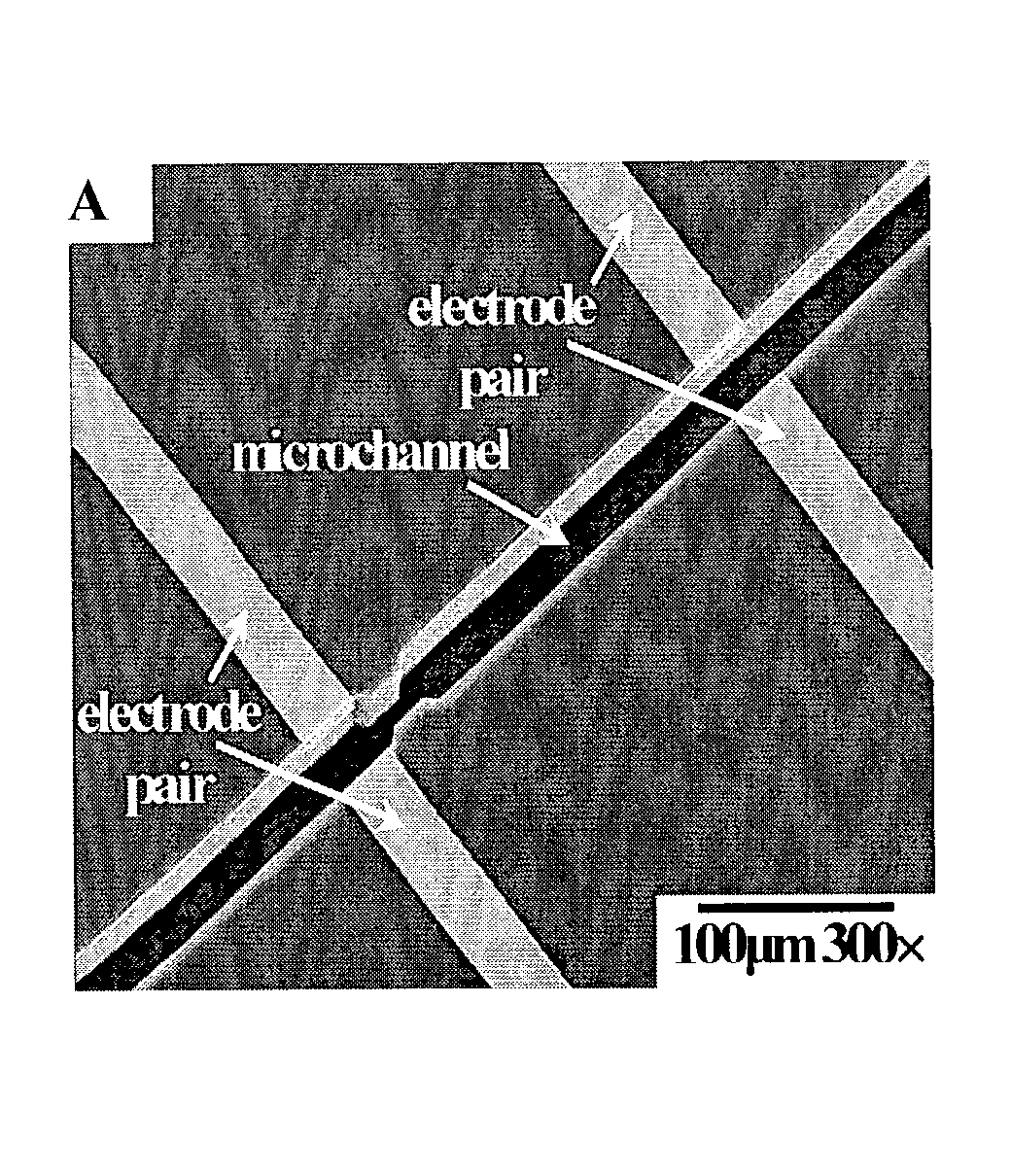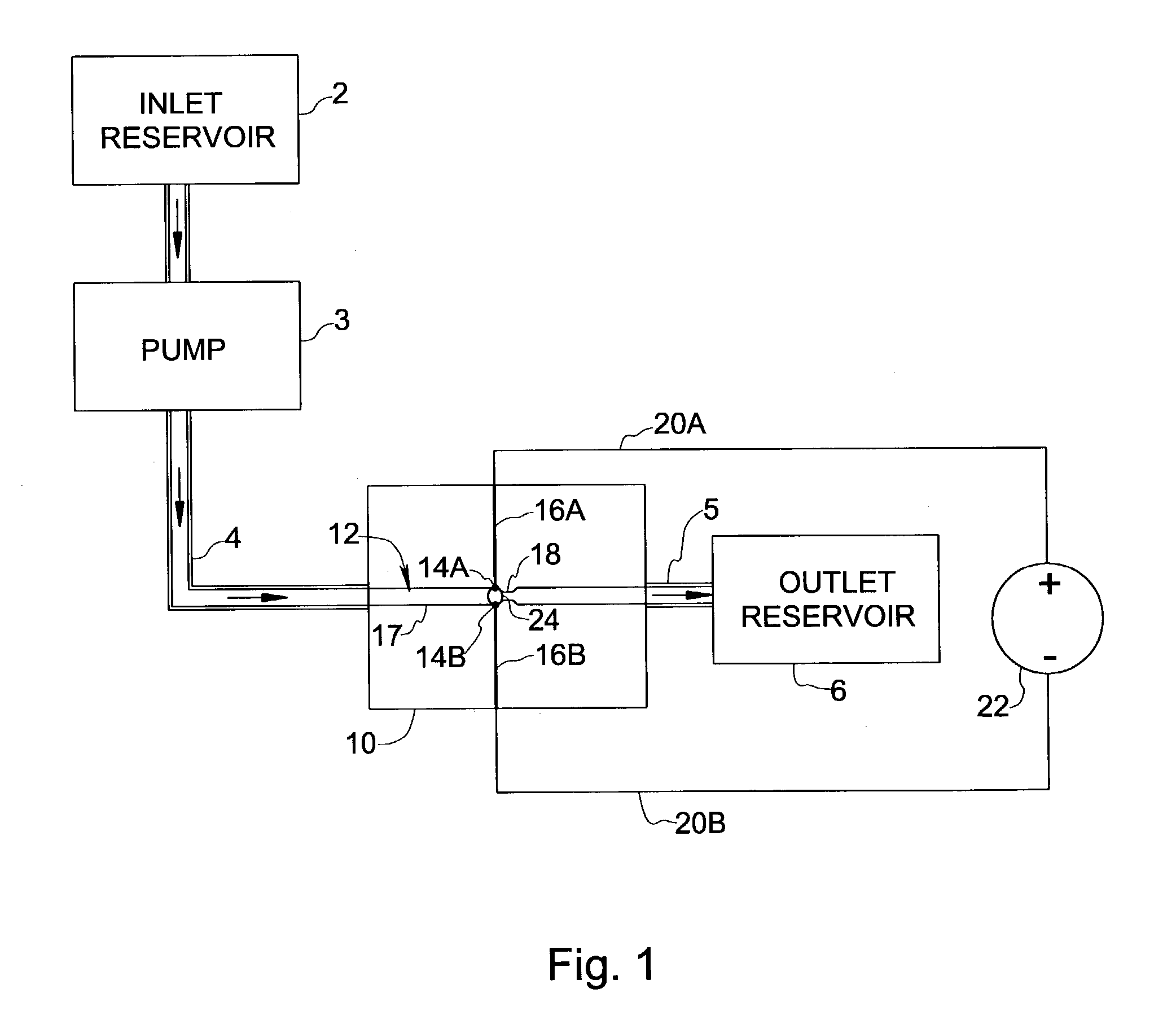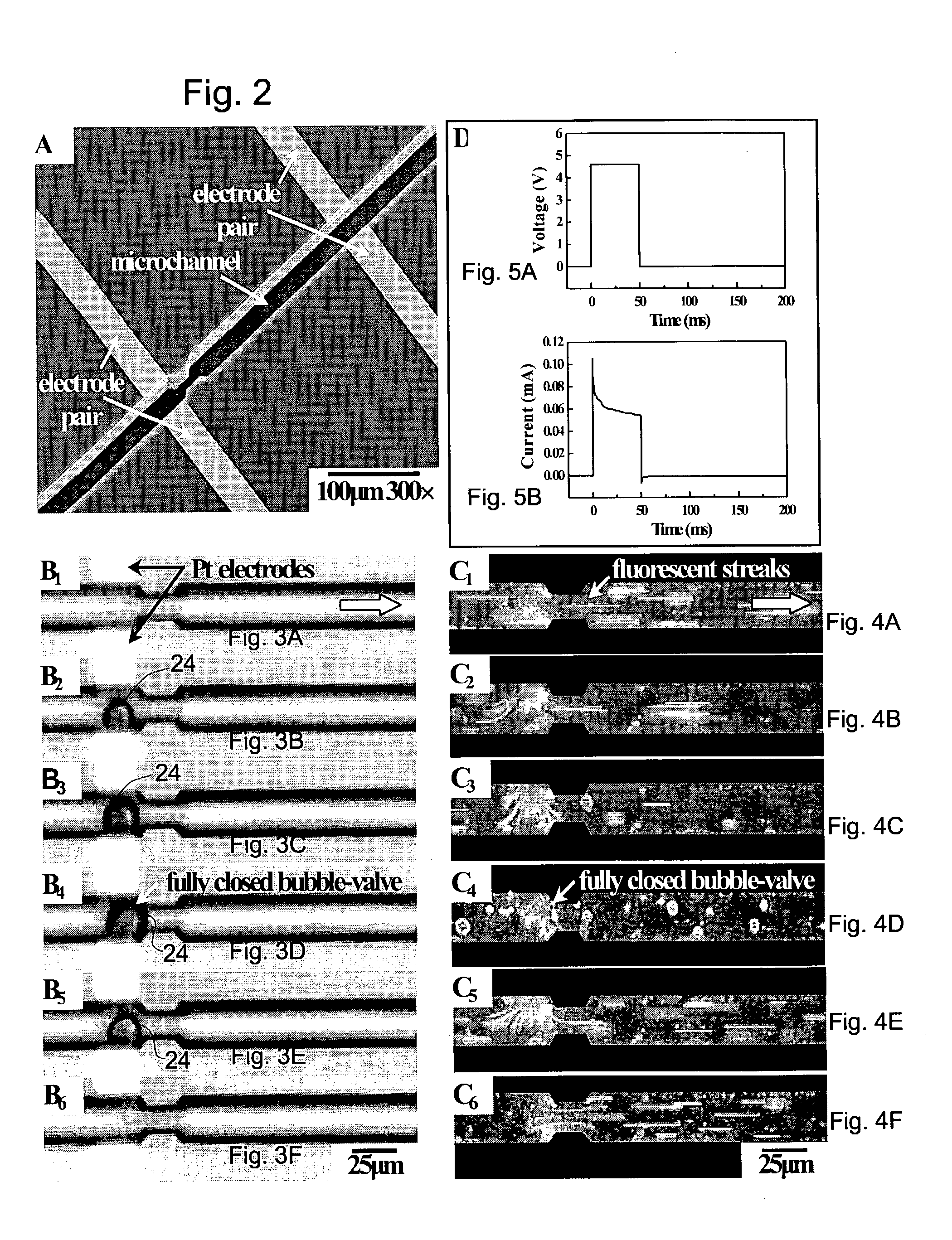Electrochemically driven monolithic microfluidic systems
a monolithic microfluidic and electrochemical technology, applied in the direction of polycrystalline material growth, mechanical equipment, separation processes, etc., can solve the problems of limited valve functional life and limited use of valves
- Summary
- Abstract
- Description
- Claims
- Application Information
AI Technical Summary
Problems solved by technology
Method used
Image
Examples
Embodiment Construction
[0029] The microfluidic chips used to test the mechanical and chemical characteristics of bubble-valves consisted of a fluid channel connecting an inlet and an outlet reservoir, and anode / cathode electrode pairs perpendicular to the channel to generate bubble valves at different locations. FIG. 2 shows a scanning electron micrograph (SEM) of a portion of the channel (the inlet and outlet reservoirs are not shown) showing two sets of electrode pairs along the length of the channel. The microfluidic system was micromachined on a silicon wafer using standard microfabrication techniques. The channel was 25 .mu.m square in cross-section and 5.2 mm long. Near one pair of electrodes, a 15 .mu.m wide neck was introduced to create a backpressure, although from experiments it was subsequently found that surface forces alone were adequate and the neck was not needed to prevent the bubble from flowing downstream. Following photolithography, the channel was first etched to 25 .mu.m in depth usin...
PUM
 Login to View More
Login to View More Abstract
Description
Claims
Application Information
 Login to View More
Login to View More - R&D
- Intellectual Property
- Life Sciences
- Materials
- Tech Scout
- Unparalleled Data Quality
- Higher Quality Content
- 60% Fewer Hallucinations
Browse by: Latest US Patents, China's latest patents, Technical Efficacy Thesaurus, Application Domain, Technology Topic, Popular Technical Reports.
© 2025 PatSnap. All rights reserved.Legal|Privacy policy|Modern Slavery Act Transparency Statement|Sitemap|About US| Contact US: help@patsnap.com



